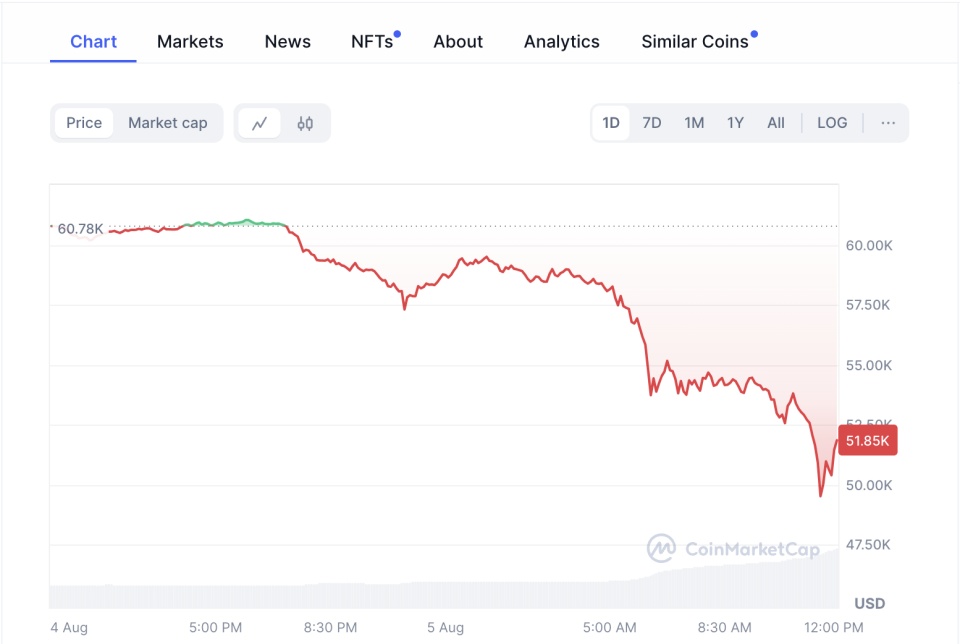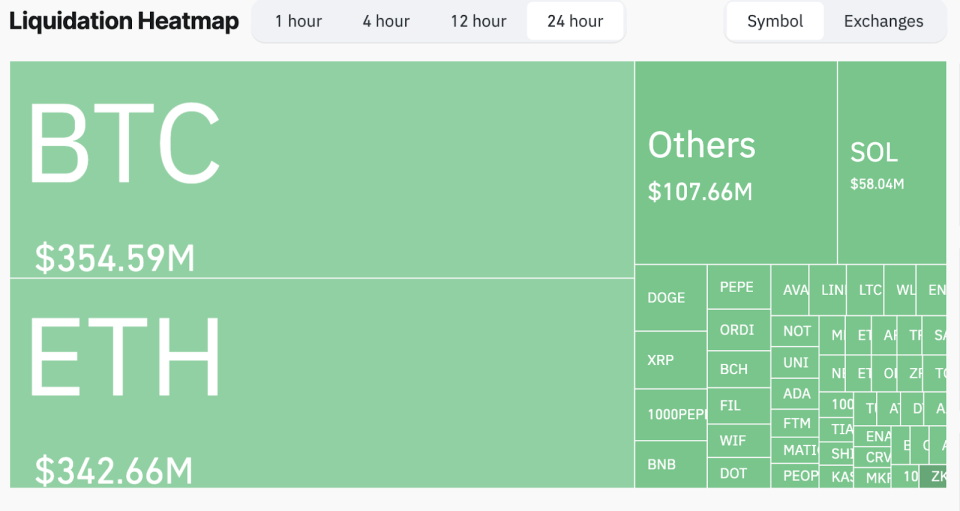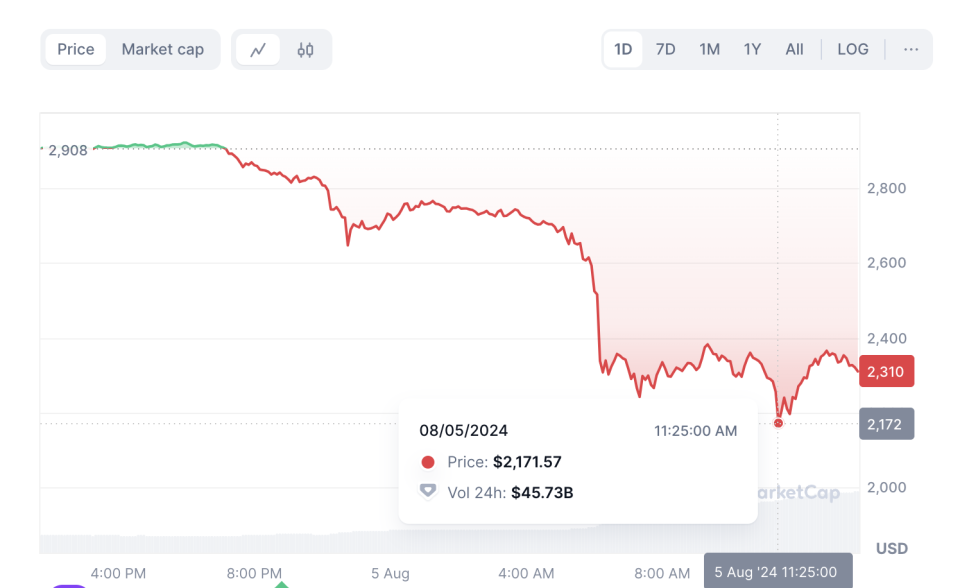
Bitcoin experienced a plunge on August 5, 2024, dropping from $58,350 to a low of $50,000 in a matter of hours.
The leading cryptocurrency has since slightly recovered and is trading at $51,000 at the time of writing, according to the latest market data.


This sudden crash marks a significant downturn for Bitcoin, which had been trading above $60,000 just days ago.
The sharp decline has resulted in massive liquidations across the market. Data from CoinGlass reveals that over $1.05 billion in leveraged positions were wiped out in the last 24 hours, with long positions accounting for $901.42 million of that total.


Source: Coinglass
The crypto market as a whole has been bleeding red, with other major assets like Ethereum also experiencing substantial losses. Ethereum (ETH) plummeted over 18% from $2,695 to as low as $2,171 before recovering slightly to $2,234.
Several factors have contributed to this market downturn:
1. U.S. Economic Concerns
The recent weak U.S. jobs report has sent shockwaves through global markets, including the cryptocurrency sector. The report showed a significant jump in the unemployment rate, with nonfarm jobs falling well short of expectations.
This data has sparked fears that the U.S. economy might be heading towards a recession, a prospect that has spooked investors across various asset classes.
The potential for an economic downturn in the world’s largest economy has far-reaching implications. It could lead to reduced consumer spending, decreased corporate profits, and a general slowdown in economic activity.
For the crypto market, which often thrives on optimism and growth prospects, this negative economic outlook has prompted many investors to reduce their exposure to high-risk assets like Bitcoin and other cryptocurrencies.
Moreover, the jobs report has fueled speculation about future Federal Reserve policies. While some believe that a weakening economy might prompt the Fed to cut interest rates, potentially benefiting fixed-supply assets like Bitcoin in the long term, the immediate market reaction has been one of risk aversion.
2. Japanese Economic Shift and the Yen Carry Trade Unwind
The recent decision by the Bank of Japan to raise interest rates by 0.25% has had a big impact on global markets, particularly affecting the popular yen carry trade strategy.
This move, which marks a shift away from Japan’s long-standing ultra-low interest rate policy, has led to a sharp appreciation of the yen, rising nearly 10% against the USD in just three weeks.
The yen carry trade, a strategy where investors borrow yen at low interest rates to invest in higher-yielding assets, has been a significant source of liquidity for global markets, including cryptocurrencies.
With the sudden strengthening of the yen, many traders have been forced to unwind these positions, leading to a cascading effect across various asset classes.
The ripple effects of this Japanese policy shift have been dramatic. Japan’s Nikkei 225 Index slumped 12.4%, marking its worst session since 2011. This turmoil in one of the world’s largest economies has contributed significantly to the global market uncertainty, further exacerbating the sell-off in cryptocurrencies.
3. ETH Sell-Off Fears: The Jump Crypto Situation
A significant factor contributing to the recent Bitcoin price crash is the activity of Jump Crypto, the cryptocurrency division of Jump Trading.
Jump Crypto has moved over 120,000 staked Ether tokens to various crypto exchanges. This process began on July 24, just one day after the launch of spot Ether ETFs in the United States.
Blockchain data shows that Jump Crypto has transferred funds to multiple major exchanges, including Binance, OKX, Coinbase, Bybit, and Gate.io.
The scale of these transfers is significant, with an estimated $410 million of Ether being unstaked and about $191 million already deposited on exchanges.
Beyond Ethereum, Jump Crypto has also moved other cryptocurrencies to exchanges, including USD Coin (USDC), Tether (USDT), Uniswap (UNI), and Shiba Inu (SHIB). This broad movement of assets across different cryptocurrencies has amplified concerns in the market.
The crypto community is speculating whether these transfers indicate that Jump Crypto is preparing for a large-scale liquidation of its assets. This speculation has fueled FUD in the market.
Ethereum (ETH) experienced a particularly severe decline, with its price plummeting to as low as $2,170. This sharp drop in the second-largest crypto by market cap further unsettled investors and contributed to the broader market sell-off.






